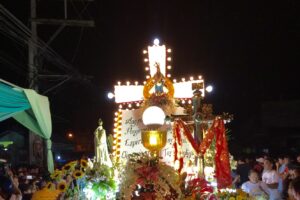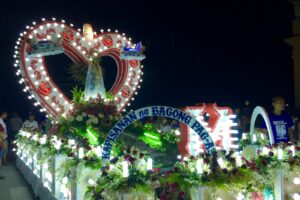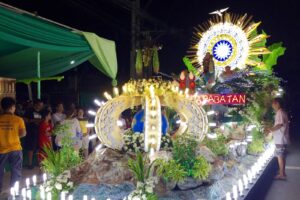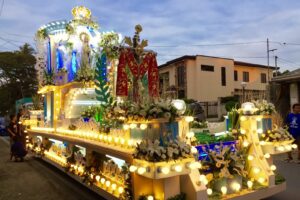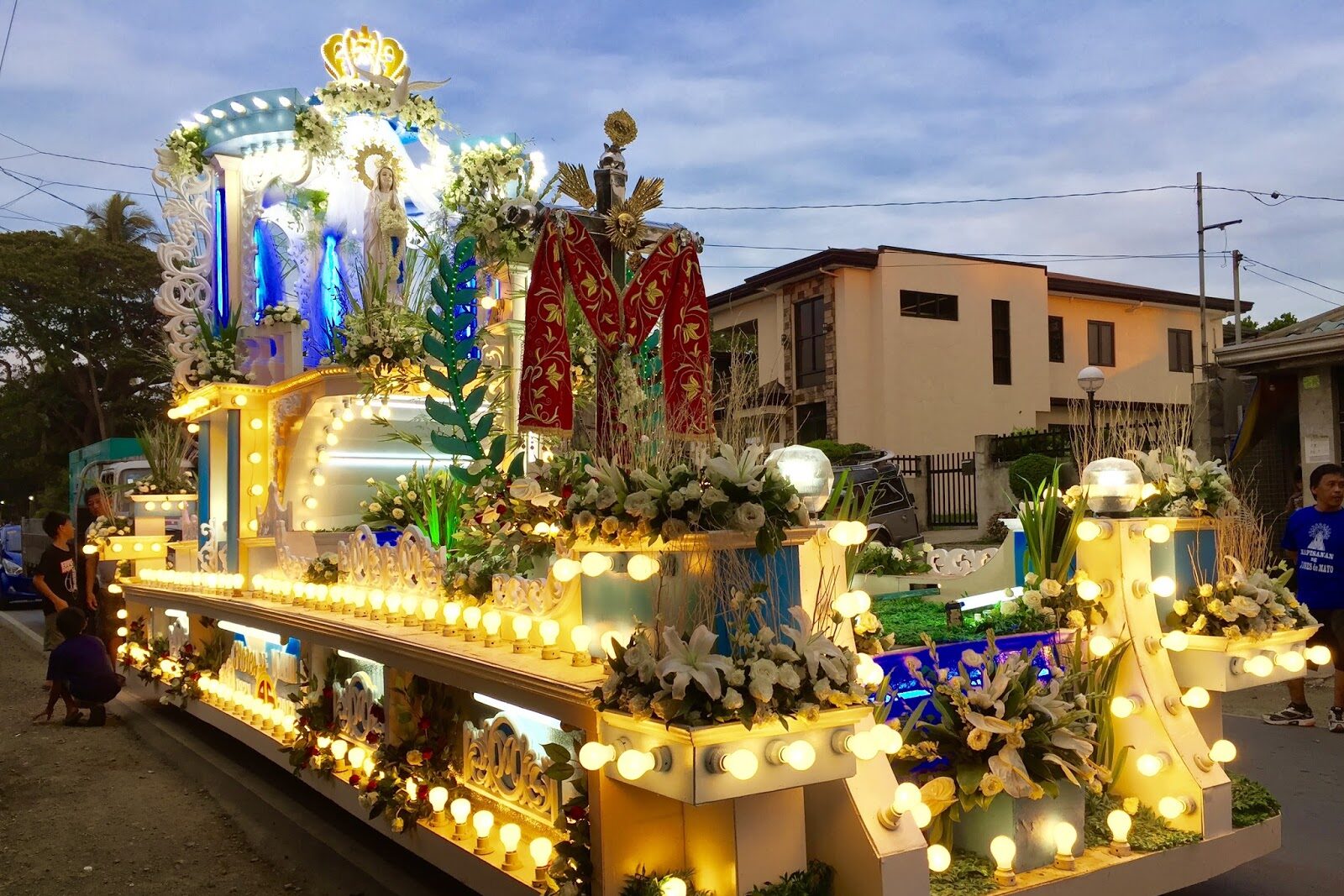
Historical Significance
The Tapusan Festival, celebrated every May 31 in the municipality of Alitagtag, Batangas, stands as one of the oldest and most deeply rooted Catholic traditions in the province. The word “Tapusan” means “the end,” marking the culmination of the month-long Flores de Mayo devotion dedicated to the Blessed Virgin Mary and the Holy Cross. This festival traces its beginnings to the mid-19th century, following the Vatican’s 1854 declaration of the dogma of the Immaculate Conception of Mary. Spanish missionaries introduced this Marian devotion across Batangas and neighboring towns, where it became a cornerstone of faith and community life.
Even before Alitagtag’s establishment as a separate municipality from Bauan in 1910, local residents were already celebrating what would become known as Tapusan. The tradition reflects not only the people’s enduring devotion to Mary but also their gratitude to God for rain, flowers, and a bountiful harvest. The early observances began with Paalay, a form of offering flowers to the Virgin Mary as a sign of thanksgiving and devotion. Families treated it as a panata (vow), dedicating a day to honor Mary through handpicked local blooms such as kalachuchi, alibangbang, caballero, and cat’s tail. These flowers were meticulously arranged into elaborate displays using banana sheaths and bamboo sticks—symbols of artistry and faith interwoven.
Over time, Tapusan grew into a grander celebration, shaped by the participation of various kapisanan or associations, each representing different barangays. Among them are the Kapisanan ng Flores de Mayo (Poblacion Proper), Kapisanan ng Diwa ng Kababataan (Poblacion West), Samahan ng Kababataan (Poblacion East), Kapisanan ng Bulaklak sa Mayo (Concepcion), Kapisanan ng Bukang Liwayway (Pinagkurusan), Kapisanan ng Bahay Kubo (Dominador East), Kapisanan Perlas ng Silangan (Dalipit East), Kapisanan ng Pagkakaisa (Dalipit West), Kapisanan ng Bagong Pag-asa (Balagbag), and Kapisanan ng Liwanag sa Karimlan (Muzon Centro). These organizations sustain the tradition across generations, ensuring that the essence of Tapusan endures in both faith and community identity.
Unique Traditions
The Tapusan Festival embodies a blend of faith, artistry, and social unity. It begins with the daily Flores de Mayo offerings throughout May, leading up to the grand procession on the final day. Historically, preparations would start weeks in advance as families and community members built the tuklong—temporary chapels made from light materials—and decorated altars of the Virgin Mary. Elderly members of each village selected young girls to serve as flower offerers, a symbolic passing of devotion from one generation to the next.
The highlight of the festival is the grand evening procession, locally known as the Santacruzan or Festival of the Holy Cross. Young women, dressed in elegant gowns and representing various Marian titles such as Reyna Elena, walk through the streets alongside their consorts in barong Tagalog. Each barangay presents its own karosa (float), intricately designed and adorned with flowers and hundreds of lights. The karosa carries the image of the Virgin Mary, transforming the streets into a glowing river of devotion and artistry. These floats are crafted in secrecy by each buklod or village, with designs changing annually to showcase local creativity—ranging from traditional floral patterns to modern innovations that incorporate lighting effects and even mechanical features.
Central to the Tapusan is the role of the Hermana Mayor and Hermano Mayor, individuals or families who assume spiritual and financial responsibility for the event. Their role reflects both faith and social honor, as they sponsor the decorations, processions, and community feasts. The day is also marked by brass bands parading through the streets, street dancing, and communal meals that unite all sectors of Alitagtag in shared festivity and gratitude.
Video from Restituto Flores
Cultural Impact
The Tapusan Festival serves as a living testament to Alitagtag’s deep-rooted Catholic faith and communal heritage. It is more than a celebration—it is an intergenerational expression of devotion that connects art, music, and faith in one of Batangas’ most symbolic religious traditions. The creativity of each barangay’s kapisanan sustains a local culture of craftsmanship, where devotion finds form through floral artistry, float design, and the meticulous organization of the festivities.
Beyond its religious essence, Tapusan reflects the social structure of Alitagtag—a community bound by cooperation, gratitude, and a shared sense of purpose. The procession’s lighted floats illuminate more than the town’s streets; they embody the collective faith of its people and their ability to blend tradition with modernity while retaining reverence for the sacred. As the bands march, the flowers bloom, and the rosaries are prayed, Tapusan continues to reaffirm the identity of Alitagtag as a town where devotion, art, and heritage thrive together.
The Tapusan Festival remains one of the most significant and enduring cultural events in Batangas, marking the close of May with the same radiance, faith, and artistry that first defined it generations ago.

